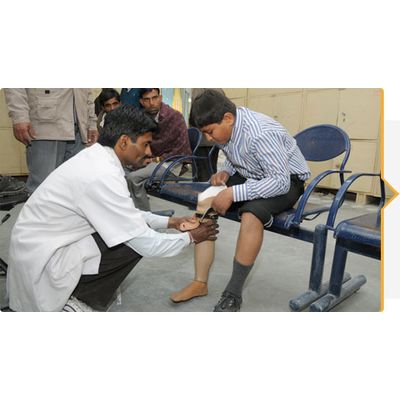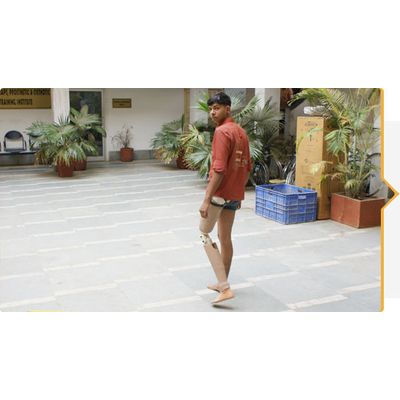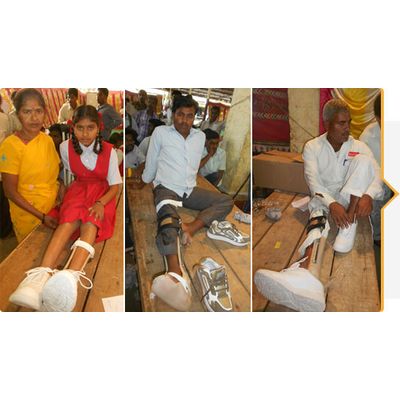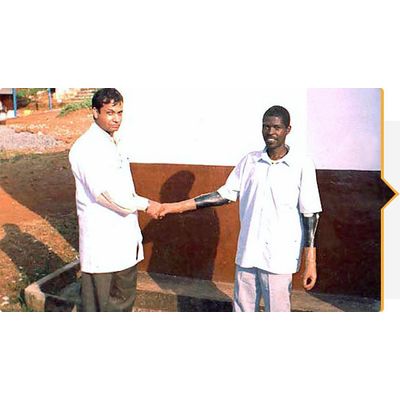

Bhagwan Mahaveer Viklang Sahayata Samiti (BMVSS) products
Prosthesis
Below-Knee Prosthesis
The below-knee prosthesis of BMVSS has been designed indigenously. The shank is fabricated from locally manufactured, durable, high-quality, high-density polyethylene pipes (HDPE). The socket design used is either total contact, which is vacuum-formed using a polypropylene sheet, or open-ended, using HDPE. This custom-made shank / socket is fitted with the Jaipur Foot. A functional below-knee prosthesis looks like a normal limb, allowing for the range of movement required for normal human locomotion. The total contact socket provides better sensory feedback to the wearer and prevents edema.
Above-Knee Prosthesis
The above-knee prosthesis is indigenously designed and fabricated from locally manufactured high-quality, high-density polyethylene (HDPE) pipes. The sockets used are of both ischial bearing and ischial containment types. The knee joints are available in a variety of designs. Single axis knee joint with lock. Single axis knee joint without lock. Stanford-Jaipur Knee. Stanford-Jaipur Knee with lock. The Stanford Knee joint is replacing other joint designs in most patients. Details of the Stanford Knee joint may be seen under the heading by the same name.
Stanford-Jaipur Knee
The Stanford-Jaipur Knee is a new invention designed by the Stanford University, USA, working with the BMVSS team. The Stanford-Jaipur Knee has been hailed by Time magazine (issue of November 23, 2009) as one of the 50 Best Inventions of the World in the year 2009. The Stanford-Jaipur Knee, also known as the Jaipur Knee, mimics normal human gait by providing stability in stance and easy movement. The Jaipur knee is based on the polycentric concept and is designed using the four-bar linkage geometry. It is made from oil-impregnated nylon. It comprises an upper and lower body block, two side linkages and a mid linkage, held together by four steel bolts. The body blocks have segments for socket and pylon attachment. The Jaipur Knee has been fitted on over 9,250 patients and BMVSS has received a very positive feedback in terms of acceptability, compliance, durability and performance.
Calipers
Calipers are devices that enable people with motor disabilities — including polio-afflicted patients — to walk and thereby remain mobile. While polio has been eradicated from India and as such there are no new polio cases detected, patients with polio continue to throng BMVSS to get calipers fitted.
Artificial Hand
Currently, the artificial hand has been undertaken from suppliers who make joints meeting the Indian Standards Institutions (ISI) mark. It is called the Jaipur Hand. BMVSS mainly fabricates the sockets. Now, a major research project on below-elbow artificial hand is underway in Stanford University in collaboration with BMVSS. The model is likely to be functionally more efficient and inexpensive. Bio-Electrical Artificial Hand is being developed by Manipal University Jaipur in collaboration with BMVSS. Negotiations are going on with Calpoly University LA also, for the development of Bio-Electrical Artificial Hand.




